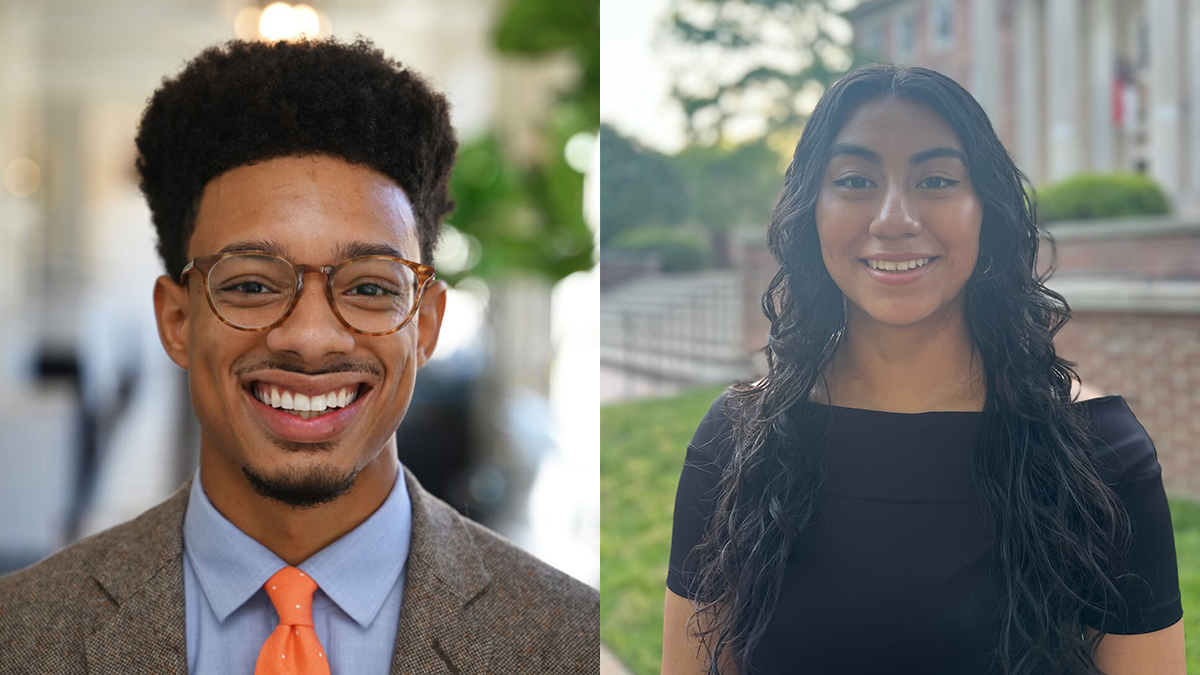Campus equipped with 107 lifesaving defibrillators
Most of the devices, like the one that saved NFL safety Damar Hamlin’s life, feature voice prompts that walk users through a simple process.

On Jan. 2, Buffalo Bills safety Damar Hamlin went into cardiac arrest after an opposing player struck him in the chest. Lucky for him, there was an automated external defibrillator on hand. Quick use of the AED helped save Hamlin’s life.
The average response time for first responders to arrive following a 911 call is eight to 12 minutes, according to the American Red Cross. For those in cardiac arrest, each minute without defibrillation drops their chance of survival by around 10%.
According to the American Heart Association, cardiac arrest claimed the lives of 436,852 Americans in 2020. Immediate cardiopulmonary resuscitation, or CPR, can double or triple a person’s chance of survival. Use of an AED can increase the chance even further.
There are 107 AEDs strategically located around Carolina’s campus. Their locations can be found on this map.
“It is important to have AEDs around campus because they are proven to save lives,” said Adam Swift, university fire marshal and fire safety and emergency response manager within Environment, Health and Safety. “You only have a few minutes if someone goes into cardiac arrest, as we saw with Damar Hamlin, but quick action can save lives.”
AEDs work by delivering an electric shock through the chest to the heart to restart or regulate a person’s heartbeat. Fully automated kits are equipped with voice prompts walking a user through the process, which is so straightforward that many children can complete the seven critical steps. According to the American Heart Association, there is no minimum age to operate the device.
Seven steps
- First, check the scene and make sure the person needs help. You should use an AED if the person is unconscious/unresponsive, has abnormal breathing or is not breathing at all, and/or has no pulse.
- Always designate someone to call 911 before using an AED.
- Once an available AED is brought to the scene, turn it on and follow the voice prompts.
- Remove all clothing covering the chest and, if necessary, wipe the chest dry. Place one pad on the upper right side of the chest and the other pad on the lower left side of the chest, a few inches below the left armpit.
- Plug the pad connector cable into the AED if necessary.
- Let the AED analyze the heart’s rhythm.
- Deliver a shock if the AED determines one is needed. Make sure no one is touching the person; say, “Clear!” in a loud, commanding voice; and then push the “shock” button.
After the AED delivers the shock, or if the AED does not advise a shock, immediately start CPR, beginning with chest compressions. Continue until medical professionals arrive and take over.
Swift said he highly recommends that everyone get trained in CPR/AED. After one session, you can receive a renewable certification.
Many national organizations, including the American Red Cross and the American Heart Association, offer the training. Here at Carolina, Campus Recreation offers CPR/AED training for students and university employees. EHS’s fire safety and emergency response offers training for staff. The student organization Campus EMS also offers training, as does South Orange Rescue Squad. Program costs vary but average around $50.
“The training is only a few hours,” Swift said, “and the hands-on practical experience really puts everything into perspective. Five rounds of (CPR) compressions doesn’t seem that hard until you actually do it. If you are trained and witness an incident, I would recommend stepping in and starting CPR until first responders arrive.”
Even those without training are exempt from civil liability by North Carolina law, known as a “Good Samaritan” law, which allows for the use of an AED during an emergency, provided that they act in good faith and are not grossly negligent. This means that rescuers need not fear legal repercussions if they are unsuccessful in resuscitating someone who suffers cardiac arrest.
“You never know when a cardiac arrest incident will occur,” Swift said. “Getting trained so you are ready if you are ever in that situation is important.”
Find more information about Carolina’s AEDs.
Editor’s note: This piece incorrectly stated that AEDs should not be used on children under 8 years old or 55 pounds. In fact, they can be used on children. This website gives guidelines for AED use on children and infants.




